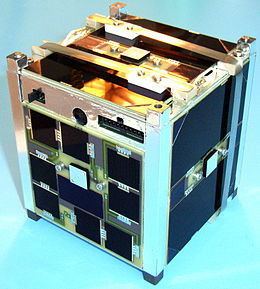Mission type Technology COSPAR ID 2009-051C Period 1.7 hours Apogee 723,000 m Launch date 23 September 2009 | Operator TUB SATCAT no. 35933 Inclination 98.36° Launch mass 1,000 g Mission duration 1 years | |
 | ||
Website www.raumfahrttechnik.tu-berlin.de/beesat/v-menue2/project_overview/ Similar ITUpSAT1, SwissCube‑1, UWE‑2, PharmaSat, ANUSAT | ||
BeeSat-1 or Berlin Experimental and Educational Satellite 1, is a German satellite operated by the Technical University of Berlin. The spacecraft is a single unit CubeSat, which was designed to test systems intended for use on future spacecraft, including a new design of reaction wheel. It has also been used for amateur radio, and is equipped with a small camera.
BeeSat-1 was launched by a Polar Satellite Launch Vehicle, serial number C14, flying in the Core Alone, or PSLV-CA, configuration. The launch took place from the First Launch Pad at the Satish Dhawan Space Centre, at 06:21 UTC on 23 September 2009. BeeSat-1 was a secondary payload aboard the rocket, which deployed the Oceansat-2 satellite. Five other secondary payloads were flown aboard the rocket; SwissCube-1, UWE-2, ITU-pSat1, Rubin 9.1 and Rubin 9.2.
BeeSat-1 is operating in a sun synchronous orbit with an apogee of 723 kilometres (449 mi), a perigee of 714 kilometres (444 mi) and 98.4 degrees of inclination to the equator. It has an orbital period of 99.16 minutes. BeeSat-1 was designed to operate for at least twelve months, and as of January 2011 it is still operational.
